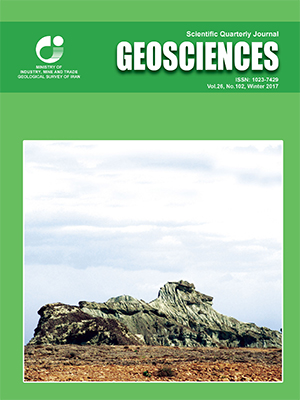Document Type : Original Research Paper
Authors
1 Ph.D. Student, Department of Geology, Faculty of Earth Sciences, Shahid Beheshti University, Tehran, Iran
2 Associate Professor, Department of Geology, Faculty of Earth Sciences, Shahid Beheshti University, Tehran, Iran
3 Professor, Department of Geology, Faculty of Earth Sciences, Shahid Beheshti University, Tehran, Iran
4 Associate Professor, Department of Geology, Faculty of Earth Sciences, Kharazmi University, Tehran, Iran
Abstract
The Jeirud Formation (Upper Devonian) in Deh-Sufian section of northeast of Shahmirzad consists of siliciclastic and carbonate deposits. In the study area lower boundary of the Jeirud Formation with fine grain clastic deposits of the Mila Formation is erosional (Disconform) and has been conformably overlain by dark carbonate deposits of the Mobarak Formation. The clastic deposits of the Jeirud Formation include conglomeratic, sandy and muddy facies. The conglomeratic deposits comprises three facies A1, A2 and A3 that are equivalent to Gcm, Gt and Gmm/Gmg of Miall facies respectively. Also, five sandy facies of B1, B2, B3 and B4 equivalent to St, Sh, Sm and Sr of Miall respectively and B5 (Shc) with hummocky cross stratification (HCS) sedimentary structure have been identified. Muddy facies including C1 and C2 are equivalents to Miall’s Fsm and Fl facies. Carbonate facies (D) comprising small amounts of the stratigraphic column is almost entirely dolomitized. Field and petrographic studies provide five facies association: fluvial, foreshore-backshore, shoreface, offshore transitional zone and offshore and carbonate facies interpreted as Proximal carbonate tempestites and distal carbonate tempestites based on evidences such as basal erosional surface, normal grading, HCS and coexisting clastic facies . In the study area, the Jeirud Formation deposits initiate with fluvial sequences that have been followed by storm dominated marine deposits as foreshore-backshore deposits and alternations of shoreface to offshore deposits. Study of sequence stratigraphic surfaces especially important subaerial unconformities and also stratal stacking patterns of the formation resulted in determination of three subaerial unconformity bounded depositional sequences plus transgressive part of the 4th sequence.
Keywords

